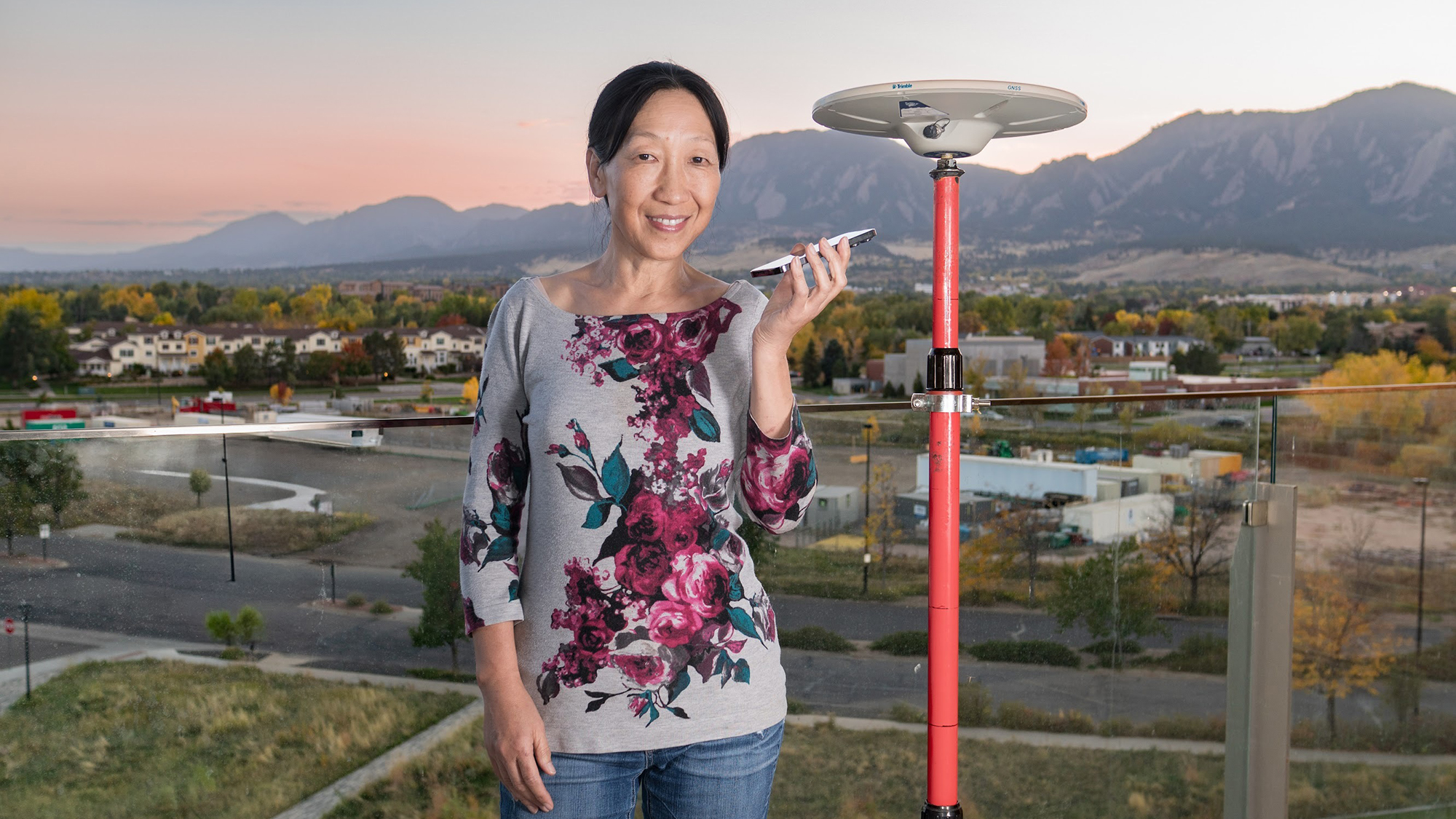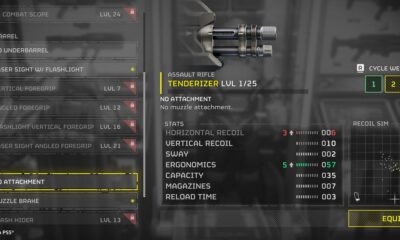Gadgets
Google used millions of Android phones to map the worst enemy of GPS

If you’ve ever followed a navigation app only to have it drift off course, the culprit responsible for the mix-up may be hovering 50-200 miles overhead. That region of the Earth’s atmosphere called the ionosphere can contain varying levels of free electrons that, when highly concentrated, can slow down GPS signals traveling between satellites and device receivers. That delay, similar to someone running late to work after frantically bobbing and weaving through a crowded city street, is one of the leading contributors to errors in navigation systems.
In a paper published this week in Nature, Google researchers demonstrated they were able to use GPS signal measurements pulled from millions of anonymous Android mobile devices to map the ionosphere. Though a signal from any single mobile device is too “noisy” to tell researchers much about the ionosphere, that noise gets corrected when there are many other devices to compare against. In the end, the researchers were able to use the vast web of Android phones to map out the ionosphere with a level of accuracy that matches monitoring stations. In areas like India and Central Africa, the Android technique actually far surpassed the accuracy of monitoring stations alone.
Scientists around the world can measure this ionospheric traffic (officially called total electron content (TEC) through a network of high-quality ground-based monitoring stations. These detection tools are effective but they are also relatively expensive to build and maintain, which makes them less common in developing regions of the world. That unequal access to monitoring stations leads to disparities in the global ionospheric mapping accuracy. Researchers from Google tried to address this mismatch by leaning on something already owned by a majority of the world’s population: mobile phones.
Google researcher and paper co-author Brian Williams told Popular Science he had previously seen firsthand how changes to the ionosphere could hinder GPS capabilities while working on Android products. He says he saw this project as an opportunity to simultaneously contribute scientific advancements and improve accuracy for everyday mobile device users.
“Instead of thinking of the ionosphere as interfering with GPS positioning, we can flip this on its head and think of the GPS receiver as an instrument to measure the ionosphere,” Williams said. “By combining the sensor measurements from millions of phones, we create a detailed view of the ionosphere that wouldn’t otherwise be possible.”
How millions of Android phones became a ‘distributed sensor network’
Modern smartphones come equipped with GPS receivers that measure radio signals beamed from satellites orbiting roughly 1,200 miles overheard in medium Earth orbit (MEO). The receivers calculate the distance between themselves and the satellites and use that to determine location, accurate to around 15 feet. Those signals travel rapidly and unobstructed through space until they hit the ionosphere. That chunk of the upper atmosphere can be more or less crowded based on variables like the season, time of day, or distance from the equator, all of which can eventually contribute to GPS accuracy errors. Most phone receivers come equipped with a correctional model that is capable of cleaning up roughly half of that estimated error.
The Google researchers wanted to see if measurements taken from receivers in Android phones could essentially replicate the ionosphere mapping that occurs in more advanced monitoring stations. Pound for pound, the monitoring stations have a clear advantage over mobile phones. For starters, they have much larger antennas than mobile phones. They also typically sit under clear open skies, unlike mobile phone phones which are often obstructed by urban buildings or a user’s jeans pocket. Each individual phone also has its own unique measurement bias that can be off by several microseconds. But what the phones lack in individual complexity they make up for in sheer numbers.
For their experiment, the researchers collected satellite navigation signals from millions of Android phones around the world equipped with a dual-frequency Global Navigation Satellite System. Google says the measurements were “aggregated” and “de-identified” and came from a sample of Android devices that already had location and other relevant settings enabled. To further preserve privacy, the researcher only used the “course location” (around 10 kilometers) associated with the phones. The sheer scale of phones used in the study let the researchers correct individual bias by comparing the devices against each other. Once all of these measurements were combined, the researchers were able to create a detailed, global map of free electrons in the ionosphere.
“A vast crowdsourced network of aggregated signals can act as a highly sensitive scientific instrument,” Google researchers wrote in a blog post.

Researchers then compared the Android phone map to measurements from a database that includes readings from monitoring stations around the world. The phone method greatly expanded coverage, particularly in areas of India and Eastern Europe where there’s a lack of monitoring stations. In the image above, the blue dots show roughly 100,000 locations around the world where sufficient numbers of phone measurements were available to help map the ionosphere. That’s compared to just 9,000 monitoring stations.
“In many parts of the world, the performance of our model is equivalent to using the state-of-the-art global ionosphere map fit on measurements from monitoring stations,” the Google blog post reads.
Ionosphere maps could make GPS more accurate
All of this could soon translate to more accurate navigation tools for consumers. In the study, the researchers claim their phone-based ionosphere maps outperformed the standard ionosphere error correction that’s already used in most phones. Moving forward, Google told Popular Science it has plans to bring some of the location accuracy benefits to future Android devices. That could potentially mean less annoying navigation errors when mapping out a route. Seemingly small or trivial accuracy improvements could actually play a crucial role when applied in extreme, emergency settings. This new level of accuracy, Williams explained, could help better distinguish between a highway and a parallel rugged frontage road, a crucial detail for first responders trying to arrive on the scene as quickly as possible.
The wide coverage area of the phone map data also gives researchers the opportunity to see and document interesting ionosphere phenomena, like plasma bubbles, with a limited amount of specialized equipment. In one surprising case, the Google researchers were able to use the phone map to identify an equatorial anomaly over South Asia that went unnoticed by the few monitoring stations in the area.
“When we first achieved the resolution needed to show the plasma bubbles moving over India near sunset I was blown away,” Williams said. “Scientists have seen equatorial plasma bubbles before but not at this level of detail in this part of the world. We were thrilled when we were able to confirm our observations when one of the NASA COSMIC-2 satellites passed through one of these plasma bubbles and measured a dip in ion density just like the phones were measuring.”
There are other, less immediate benefits from the Android ionosphere maps as well. When they analyzed the Android receive measurements, the researchers said they were able to detect signatures of electromagnetic activity that corresponded with a pair of powerful solar storms that occurred earlier this year, including one that occurred in North America between May 10-11, 2024. The ionosphere measured by phones in that area showed a clear spike in activity followed by a quick depletion afterward. Though that storm was picked up by monitoring stations, the study notes that phone-based ionosphere measurements in areas without monitoring stations could provide more insight into solar storms or geomagnetic activity that might otherwise get missed. Analyzing this data could help scientists better understand how best to prepare and respond to potentially dangerous events moving forward.
“The ionosphere maps produced with phone measurements reveal ionosphere dynamics in more detail in some locations than was available before,” Williams said. “We hope that the new view of the ionosphere revealed by phone measurements will help scientists better understand the effect of geomagnetic storms on the ionosphere.”
-

 Destination8 months ago
Destination8 months agoSingapore Airlines CEO set to join board of Air India, BA News, BA
-

 Breaking News10 months ago
Breaking News10 months agoCroatia to reintroduce compulsory military draft as regional tensions soar
-

 Gadgets3 months ago
Gadgets3 months agoSupernatural Season 16 Revival News, Cast, Plot and Release Date
-

 Tech News12 months ago
Tech News12 months agoBangladeshi police agents accused of selling citizens’ personal information on Telegram
-

 Productivity11 months ago
Productivity11 months agoHow Your Contact Center Can Become A Customer Engagement Center
-

 Gadgets4 weeks ago
Gadgets4 weeks agoFallout Season 2 Potential Release Date, Cast, Plot and News
-

 Breaking News10 months ago
Breaking News10 months agoBangladesh crisis: Refaat Ahmed sworn in as Bangladesh’s new chief justice
-

 Toys12 months ago
Toys12 months ago15 of the Best Trike & Tricycles Mums Recommend



















